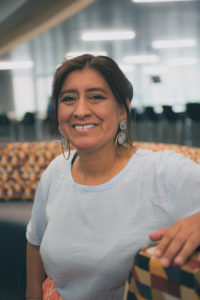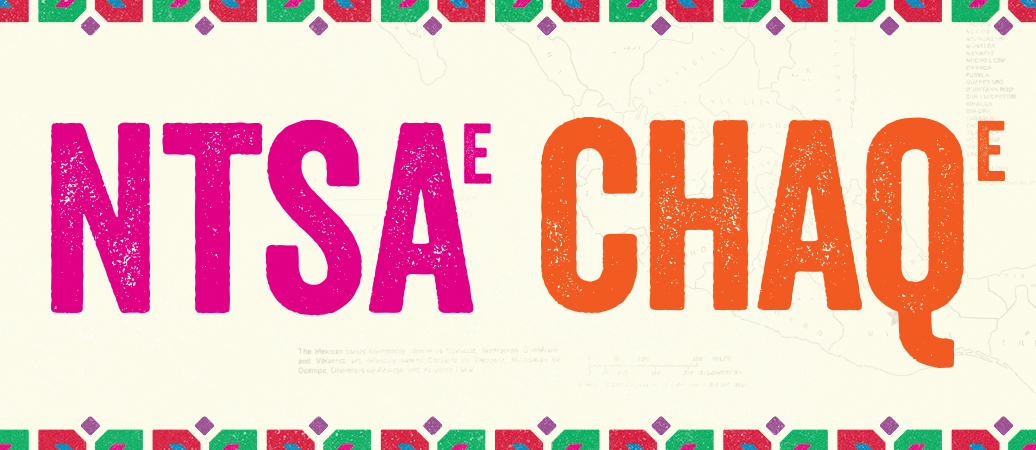A mother reading a bedtime story to her child is a universal image that evokes a nostalgic smile.
But what if that woman could not do so in her native language? What if the language of her childhood had no written form, no alphabet? This situation was a reality for Hilaria Cruz. “I was kind of sad,” she recalled wistfully.
Cruz, as a child, spoke the tonal language Chatino in her southwestern Mexican hamlet. When her family moved to the district capital for education, the preteen girl had to learn Spanish by total immersion. Years later, in 1991, she was learning a third language through English as a Second Language (ESL) classes in the United States.
Now a field linguist, Cruz is an assistant professor of comparative humanities, where she will add to her fall class schedule a new course on endangered languages such as her childhood Chatino, and a variation called San Juan Quiahije.
This summer, she will be teaching the language to Mexican families using children’s books that she and former students published. By videotaping the parents reading,

Cruz intends to broaden the impact of the lessons via social media. Cruz and her sister, Emiliana, a linguistic anthropologist, will give away some books in Oaxaca City, Mexico City and San Juan Quiahij.
To accomplish this, and at last to be able to read to her now-adult daughter in Chatino, Cruz faced the intimidating task of creating an alphabet.
“An ideal alphabet should be able to explain with symbols all the thoughts a person has in their mind,” Cruz said.
An estimated 70% of the world’s spoken languages are tonal with the best known being Mandarin Chinese. Roughly one billion people speak Mandarin. Chatino speakers number about 40,000 to 50,000.
In tonal languages, the words’ meaning changes with the melody, so to speak, with a complex system of high, low and mid tones, and rises and falls in pitch distinguishing the differences. So the same general spelling could mean various things, depending on the speaker’s pitch; Cruz shared the example of a word (kla) that can mean fish, dream, stream or the expression “you will arrive” — all intoned with slight differences.
For her alphabet, Cruz assigned different capital letters to the pitches and used those letters in her notations next to each word. So klaA means fish while klaF means dream.
Cruz never had the chance to study Chatino grammar before her family relocated. Although Mexico has various languages, indigenous children were forced to learn Spanish, the country’s dominant language, when they pursued formal education. The result, in Mexico as in other countries, meant lost fluency and the endangerment of native languages as students integrated themselves into a more homogenous culture.
Just as her family wanted its daughters to gain that more advanced schooling, Cruz’s father encouraged her to go to college.
Cruz moved to the U.S. in 1991 and enrolled in English classes in Washington. Learning about the linguistics field, she thought maybe it could help her develop a written Chatino language, so she wrote to various linguists seeking guidance.
Her academic trek led her to the University of Texas at Austin, where she earned her doctorate. Graduate field work drew her back to where Chatino was spoken. After recording political speeches and spoken prayers, she laboriously typed all the sounds, yielding more than 100 hours of archived speech that she analyzed for her dissertation.
While a Dartmouth University postdoctoral fellow in 2018, Cruz taught an undergraduate language revitalization course, helping students develop children’s books in indigenous North American languages with no English translations.
To start the project, she turned to her mother, a seamstress who stitched blank cloth books. A student drew the images, which they transferred on paper and ironed onto the pages. Their books featured the North American languages Chatino, Ojibwe and Hupa.
Later the picture books were published on more durable stock, like common early childhood books. Those are the books the Cruz sisters are distributing this summer when they travel back to Mexico and plan to share more broadly via videos on social media.
Cruz’s work attracted attention lately when she was interviewed for podcasts including “Lingthusiam.” She also attended a conference last summer that united people from various backgrounds — computer science, linguists, native speakers — looking for ways to preserve “small” native languages before their remaining speakers die out in cultures taken over by “big” languages spoken more widely.
“Many people will say, ‘Why do I have to know that?’ ” Cruz said. “If we lose one of their languages, we are losing a knowledge that a group of people developed.”
As part of a preservation effort, Cruz hopes someday that schools would be able to use indigenous languages for instruction and that automatic speech recognition devices such as Alexa and Siri could respond in minority languages such as Chatino.
She has allies. Noting the cultural loss of disappearing languages, the United Nations has declared 2019 the International Year of Indigenous Languages to encourage action to preserve, revitalize and promote them.
“It’s part of the creative capacities that we humans have and that is why we as humans should value it,” Cruz said.



























